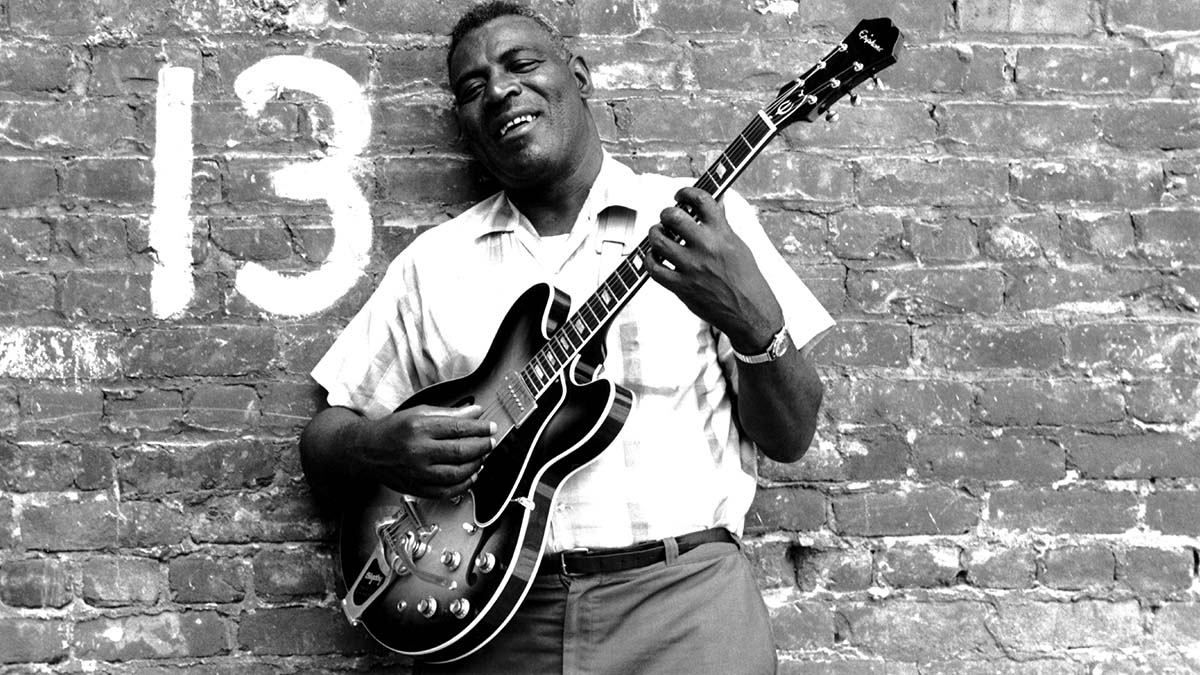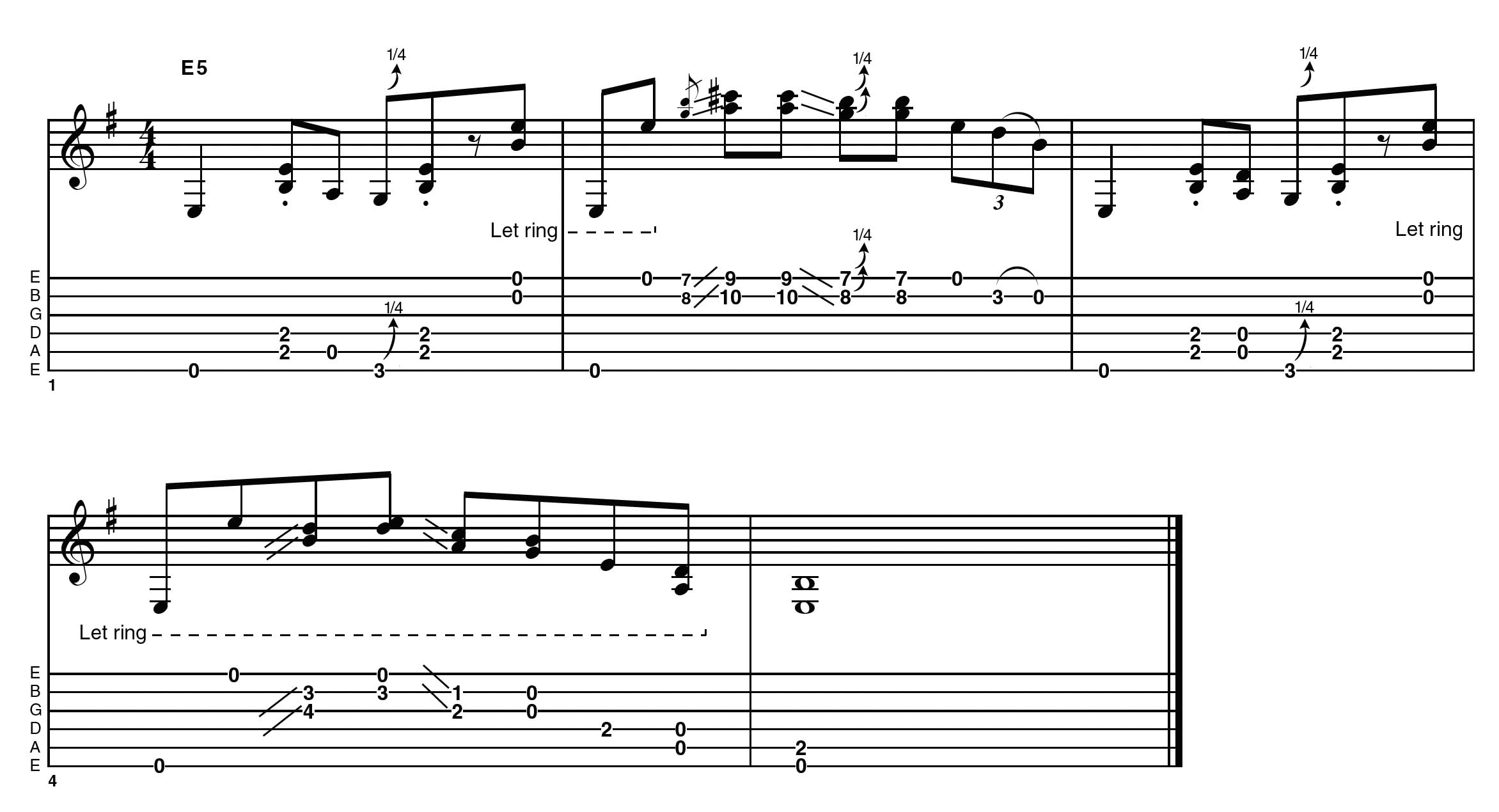How to play old-school blues
Learn some six-string rhythms in the style of blues heavyweights Howlin' Wolf and Hubert Sumlin

In this lesson, we're taking a look at the technique and style of 60s blues legends including Howlin’ Wolf, with sideman Hubert Sumlin.
The example ‘solo’ is really a study on how such players would embellish a static chord – sometimes throughout a song. A tune such as Smokestack Lightning doesn’t have a chord progression as such, it just uses the repeated guitar figure as a ‘hook’.
In my example piece, there’s repetition in the form of the rhythmic E5 chord, but the fills in between are changed around to show a few options. I’m treading a line here between simplicity and authenticity, and demonstrating how themes can be developed and/or expanded upon in this context.
I’ve used plenty of ringing open strings and double stops (pretty much exclusively from the E blues scale) to cover position shifts and keep the intensity over the ‘bare bones’ backing track [below].
If handled right, this kind of blues can be played on a lone guitar without any backing track at all – and this certainly played a role in the development of this style.
Another main consideration when playing this style is rhythm. While this isn’t complex in the technical sense, it needs a certain touch. It might be helpful to talk in terms of a drum beat to analyse the rhythm.
If the initial hit of the E5 chord is like a bass drum on beat 1, then the open second and first strings (B and E) on beat 2 form the short, snappy ‘snare’ beat.
This pattern forms the basis of the whole piece with some swung upstrokes providing a shuffle feel – primarily between beats 2 and 3 of each bar. It might be helpful to establish the basic rhythm first, then add in fills once you’ve gathered momentum. Hope you enjoy this and see you next time!
Example 1

This first section establishes the rhythm and basic harmony, with little embellishment. Having said that, note the swung up-beat before we start – this establishes the swung feel right from the word go.
The brief fill in bar 2 takes from shapes 1 and 2 of the E minor pentatonic/blues scale, but there’s no further ‘lead’ guitar playing here. Try to play this so that it could also function without the backing track
Example 2

The second four-bar section becomes slightly more expansive, adding a fill in bars 2 and 4. It’s essential to get cleanly in and out of these, just as a drummer must not lose the beat when adding a fill.
The doublestop in bar 2 is given a slight push sharp in the ‘blues bend’ tradition, before sneaking in a triplet, complementing the swung feel.
Example 3

Getting slightly more risker here, with a few quick position shifts between the rhythm part and shape 4/shape 1 of the E minor pentatonic. A sense of continuity is given by allowing open strings to ring, covering these position changes.
The fills in bars 2 and 4 both start with a quarter-tone bend on a doublestop from shape 4. However, the first fill takes a simpler melodic approach, while the second builds things with a flashier triplet pattern.
Example 4

The final section continues the jump between the rhythm part and shape 4 of the E minor pentatonic, sliding out then back into position at bar 2.
Conscious that we are coming to a close, the final lick plays a descending pattern based around the E minor pentatonic.
In a perfect world, I might have played a C# rather than the C natural in bar 4, but I resisted the urge to strive for ‘perfection’ and do another take, as I didn’t want to lose the feel!
Get The Pick Newsletter
All the latest guitar news, interviews, lessons, reviews, deals and more, direct to your inbox!
As well as a longtime contributor to Guitarist and Guitar Techniques, Richard is Tony Hadley’s longstanding guitarist, and has worked with everyone from Roger Daltrey to Ronan Keating.
“There are so many sounds to be discovered when you get away from using a pick”: Jared James Nichols shows you how to add “snap, crackle and pop” to your playing with banjo rolls and string snaps
Don't let chord inversions bamboozle you. It's simply the case of shuffling the notes around








![Joe Bonamassa [left] wears a deep blue suit and polka-dotted shirt and plays his green refin Strat; the late Irish blues legend Rory Gallagher [right] screams and inflicts some punishment on his heavily worn number one Stratocaster.](https://cdn.mos.cms.futurecdn.net/cw28h7UBcTVfTLs7p7eiLe.jpg)


